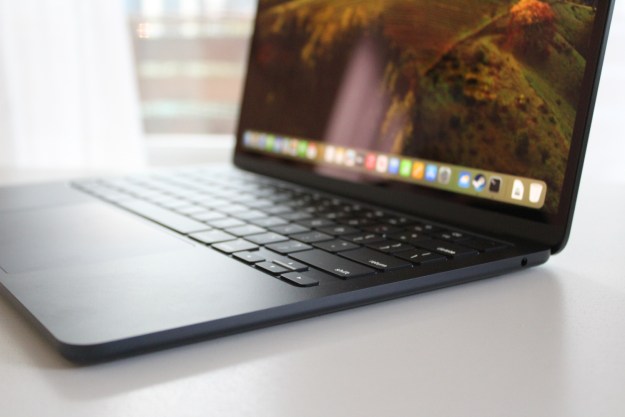Billed as the company’s most ultra-thin graphics processors to date, AMD’s new Radeon Pro 400 Series is based on 14nm FinFet process technology, which is essentially a platform for cramming millions of fin-shaped transistors into a tiny graphics chip. Of course, the smaller the number, the more transistors manufacturers can cram into an equally sized chip. Right now, 14nm seems to be the new sweet spot.
AMD also notes that its new GPU series is based on a process called “die-thinning” that reduces the wafer thickness in each chip down to 380 microns from 780 microns. While both numbers are rather small to begin with, 380 microns measures less than four stacked pieces of paper. These new GPUs, with an overall thickness (z-height) of 1.5mm, also operate under 35 watts, drawing very little power and staying rather cool in the process.
With that introduction out of the way, let us get to the scarce-but-meaty facts:
| Radeon Pro 460 | Radeon Pro 455 | Radeon Pro 450 | |
| Architecture: | Polaris 11 | Polaris 11 | Polaris 11 |
| Transistor count: | 3 billion | 3 billion | 3 billion |
| Graphics Core Next Version: | 4.0 | 4.0 | 4.0 |
| Compute units: | 16 | 12 | 10 |
| Stream processors: | 1,024 | 768 | 640 |
| Peak performance: | 1.86 TFLOPS | 1.3 TFLOPS | 1 TFLOPS |
| Memory bandwidth: | 80GB per second | 80GB per second | 80GB per second |
| HDMI 2.0 Support: | Via USB Type-C | Via USB Type-C | Via USB Type-C |
| DisplayPort 1.2 Support: | Yes | Yes | Yes |
| TDW: | Under 35 watts | Under 35 watts | Under 35 watts |
| VRAM: | 2GB | 2GB | Unknown |
Unfortunately, that is all the information we have on the three new Polaris chips for now. Keep in mind these are discrete graphics processors and do not necessarily sit nice and cozy next to the company’s APU all-in-one processor portfolio for laptops. They are cousins of the desktop-focused Radeon RX 400 Series of GPUs released for general consumption over the summer.
Also, note that the version of Polaris architecture listed in the table above is speculation for now. There is a good indication that the numbering may fall in line with the RX 400 Series in which the Radeon RX 460 is based on Polaris 11 (RX 470 and RX 480 use Polaris 10). The Radeon RX 460 also consists of 896 stream processors, which is lower than the Radeon Pro version with the same number. Then again, the RX 460 offers better peak performance at 2.2 TFLOPS.
“We couldn’t be more proud to have Radeon Pro 400 Series Graphics launching in the new 15-inch MacBook Pro, a notebook designed for performance and creativity,” said Raja Koduri, the senior vice president and chief architect of AMD’s Radeon Technologies Group. “Radeon Pro 400 Series Graphics are a powerful and versatile creative technology that gives makers entirely new ways to create the art of the impossible no matter where they are.”
To celebrate the launch of its Radeon Pro 400 Series GPUs, AMD threw the doors open to a new program called “Meet the Creators.” In addition to bringing together creators to share their work and collaborate with others, the program will also showcase how the new Radeon Pro 400 Series GPUs will enhance the creative process. One of the program’s highlighted tools is called Radeon ProRender, a rendering engine that will go into open source before the end of the year.
Editors' Recommendations
- The XPS 16 is fighting an uphill battle against the MacBook Pro
- MacBook Pro 16 vs. MacBook Pro 14: The important differences
- Why you should buy a MacBook Pro instead of a MacBook Air
- Why you should buy a MacBook Air instead of a MacBook Pro
- The MacBook Air 15 vs. MacBook Pro 14: the easy way to decide



